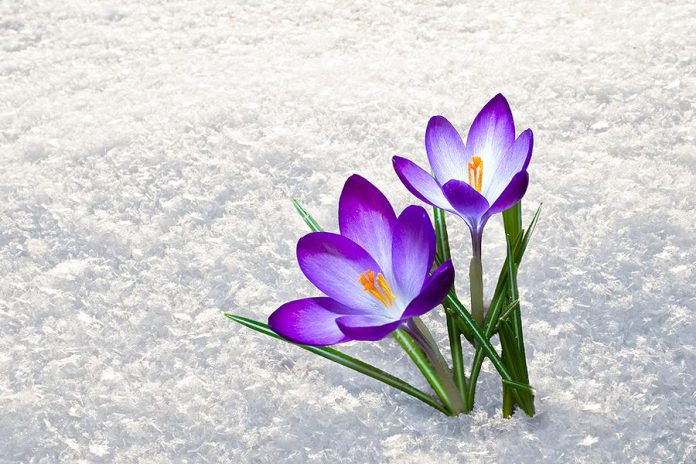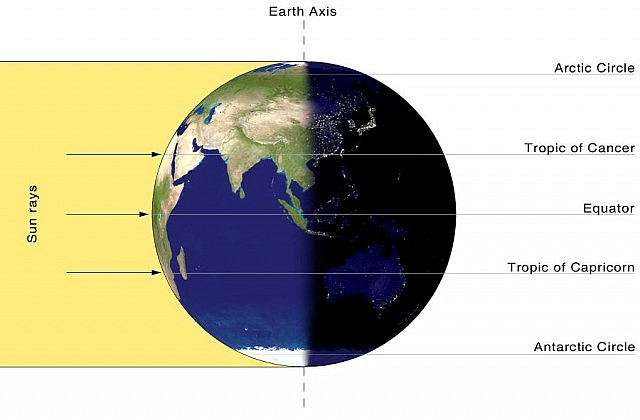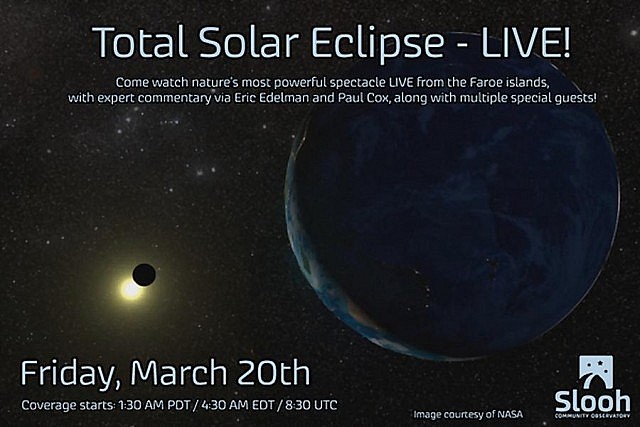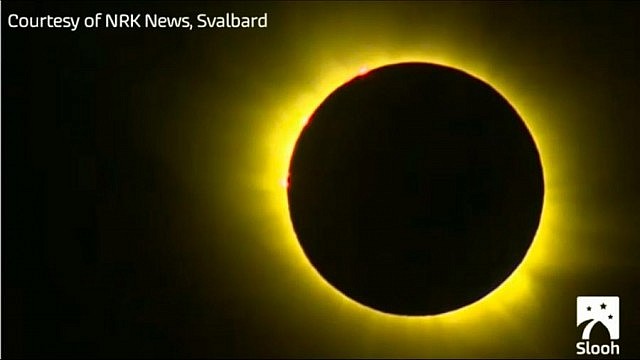
Spring officially arrives on Friday, March 20th at 6:45 p.m. and, if you’re willing to get up early on Friday morning, you can celebrate by watching a live webcast of a total solar eclipse.
The arrival of spring in the northern hemisphere is marked by the vernal equinox. This is the moment when the plane of the earth’s equator passes the centre of the Sun’s disk and the tilt of the earth’s axis neither inclines away from nor towards the Sun.
There’s an equinox in the spring and another in the fall, the difference being whether the sun’s rays are crossing the equator into the northern hemisphere or into the southern hemisphere.
The word equinox comes from the Latin words for “equal” and “night”, but it doesn’t actually mean equal hours of day and night. At sunrise and sunset, it’s still light even though the centre of the sun’s disk is below the horizon, so there’s a few more minutes of daylight than night during the vernal equinox.
The vernal equinox also marks the day when daylight hours continue to increase until the summer solstice, which occurs on Sunday, June 21 at 12:38 p.m.

Although our sun is around 400 times larger than the moon, we experience total solar eclipses because the sun is also 400 times farther away — so the moon can block out the sun.
The eclipse begins at 4:30 a.m. on Friday morning. Even if it didn’t happen in the dark, we still wouldn’t be able to see it in the Kawarthas. But you can still watch it … read on.
The only Earthlings who will see the complete total solar eclipse in person are residents of the Danish-owned Faroe Islands off the northern coast of the United Kingdom, although residents of Europe and even North Africa and Asia can enjoy a partial eclipse in the morning.
The only Canadians who might be able to see it are residents of St. John’s in Newfoundland, as the edge of the Moon’s shadow will pass there briefly.
Astronomers say the total eclipse will be particularly striking because there will also be a “supermoon”. Technically known as the perigee-syzygy of the Earth-Moon-Sun system, it’s when the moon is at the point of its elliptical orbit closest to the earth.

If you’re willing to get up at 4:30 a.m., you can watch the total eclipse online courtesy of Slooh Community Observatory . Weather permitting, a Slooh expedition team will be documenting the whole experience live from the Faroe Islands along with expert commentary.
You can see the free live broadcast at http://live.slooh.com/stadium/live/the-total-solar-eclipse-of-2015. [If you missed the live broadcast, visit the link to watch a replay of the event. If you want to see “totality” (when the sun was completely obscured by the moon), skip to 1:45:35 in the video.]
The solar eclipse will last two-and-a-half hours, but the longest time that the sun will be completely shielded by the moon is 2 minutes and 46 seconds.
Here’s a screenshot of Friday’s solar eclipse at the moment of totality:



























